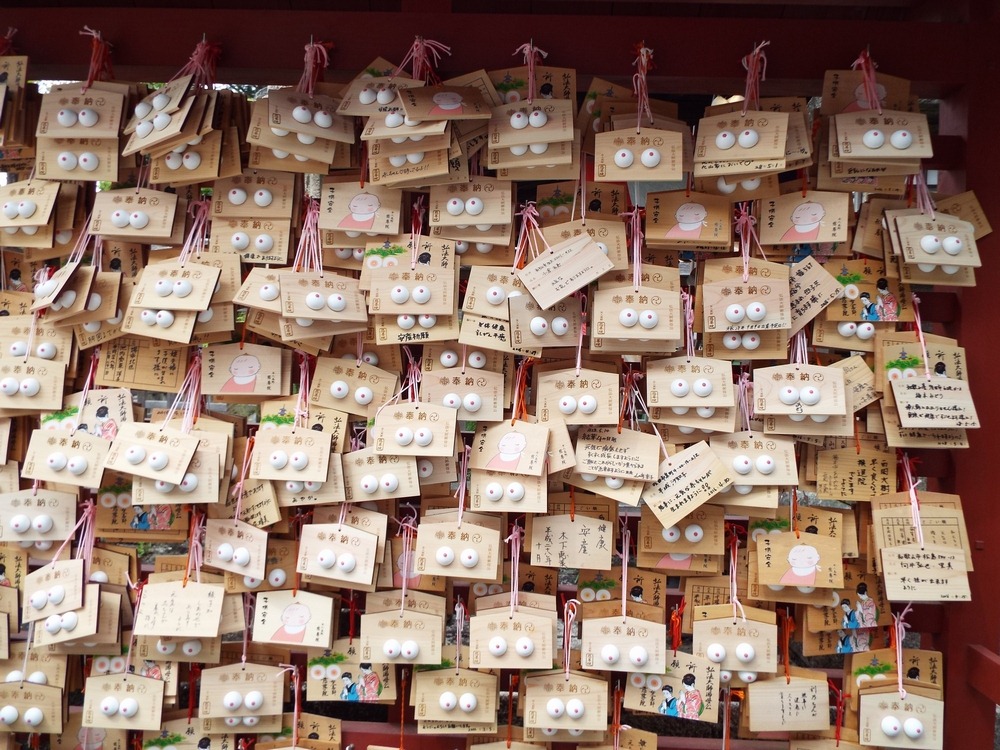Situated at the base of Mount Koya, in the small town of Kudoyama, in Wakayama prefecture, the Jison-in temple looks looks no different than any number of Japanese Buddhist temples. But step inside, and you will notice that all around the temple grounds are a unique type of offering that appears a little out of place for a site of spiritual reverence —female breasts.
These busty decorations made out of foam-stuffed fabric with beads for nipples hang from every corner of the complex. Other depictions of the female breasts include carved wooden blocks and paintings on wooden plaques.

Photo credit: oni3.jp
According to the temple's head priest, Annan, the unusual tradition began when a doctor came to pray for a patient undergoing treatment for breast cancer, and asked the temple’s staff if they could place a symbol of breasts as an offering. The temple obliged. As word of the unusual request spread, people from all around the country and beyond started coming to the place to pray for all kinds of health issues affecting their mothers, daughters, wives and sisters. These ranged from safe pregnancies, protection from cancer and even a healthy breast milk supply. Over the years, they have left thousands of offerings of breasts. These specialized form of offerings can be purchased on-site.
Jison-in was founded as a gateway to the sacred Mount Koya, or Koyasan, in the early 9th century, by Kobo Daishi, one of Japan's most significant religious figures and the founder of Shingon Buddhism. When Kobo Daishi’s elderly mother came to see the complex on Mount Koya that her son had founded, she stayed at Jison-in, since women were forbidden to enter Koyasan at that time. Legend has it that Kobo Daishi came down from the mountain nine times a month to see his mother, hence the town’s name of Kudoyama, which is literally, ‘nine times mountain’.
Today, Jison-in functions as the administrative base for activities further up the mountain, and the starting point of the pilgrimage to Koyasun.
Photo credit: CNN
Photo credit: CNN
Photo credit: www.e-aruki.com
Photo credit: www.e-aruki.com
Photo credit: Ogura Shoji/Wikimedia
Photo credit: Kenpei/Wikimedia
Photo credit: hashimoto-news.com



















Comments
Post a Comment